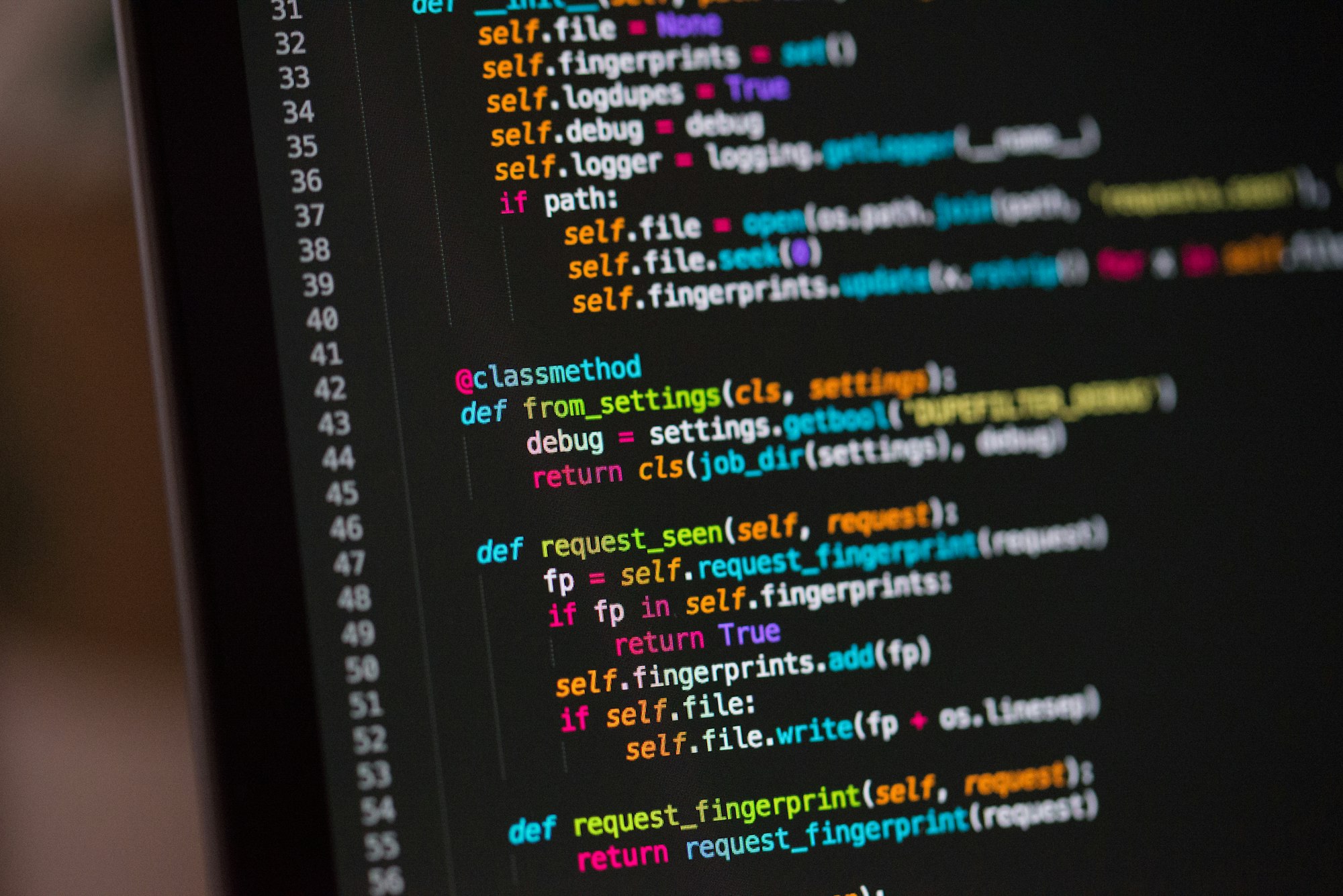Implementing RSA from Scratch in Python (Part 4)

Please note that it is essential for me to emphasize that the code and techniques presented here are intended solely for educational purposes and should never be employed in real-world applications without careful consideration and expert guidance.
At the same time, understanding the principles of RSA cryptography and exploring various implementations is valuable for educational purposes and understanding how to code encryption methods, building secure encryption systems for practical use requires adherence to industry standards, best practices, and thorough security assessments. An inadequate implementation or improper usage of cryptographic techniques can lead to severe vulnerabilities, jeopardizing the confidentiality and integrity of sensitive data.
In the previous articles, I talked about diving into the fundamentals of RSA encryption, from understanding the mathematical principles behind it on how to implementing key generation, encryption, and decryption procedures in the Python programming language. We also wrote a way to handle the issues with side-channel attacks such as timing attacks that pose risks to the RSA implementations. Now, I think we are ready to dive deeper into more advanced techniques and explore future directions in RSA encryption.
Homomorphic Encryption
Homomorphic encryption is a cryptographic technique that enables computations to be performed directly on encrypted data without the need for decryption, thus preserving privacy as much as we can. This property makes homomorphic encryption particularly appealing for scenarios where sensitive data must be processed while maintaining total confidentiality of the data that is being encrypted – a good example of this is in cloud computing, outsourced data analysis, and secure collaborative environments.
There are different flavors of homomorphic encryption, including partially homomorphic encryption (PHE) and fully homomorphic encryption (FHE). While PHE schemes support a limited set of homomorphic operations – addition or multiplication – FHE schemes allow for arbitrary computations on encrypted data.
To help people understand the power of homomorphic encryption, consider the following scenario:
Suppose Alice wants to outsource the computation of a function f on her sensitive data x to an untrusted server controlled by Bob. However, Alice is concerned about revealing x to Bob, as it contains confidential information. With homomorphic encryption, Alice can encrypt x using a public key and send the encrypted ciphertext to Bob. Bob can then perform the computation `f `on the ciphertext without decrypting it, yielding an encrypted result. Finally, Alice can decrypt the result using her private key to obtain the output of the computation f(x), all while ensuring the confidentiality of x.
import rsa
# Generate RSA keys
(pub_key, priv_key) = rsa.newkeys(2048)
# Encrypt two numbers
num1 = 123
num2 = 456
enc_num1 = rsa.encrypt(num1, pub_key)
enc_num2 = rsa.encrypt(num2, pub_key)
# Homomorphic addition: Multiply the ciphertexts
enc_sum = enc_num1 * enc_num2
# Decrypt the result
dec_sum = rsa.decrypt(enc_sum, priv_key)
print("Sum of encrypted numbers:", dec_sum)In this example above, we generate an RSA public-private key pair. We then encrypt two numbers num1 andnum2 using the public key. By multiplying the encrypted ciphertexts enc_num1 and enc_num2, we perform a homomorphic addition operation. Finally, we decrypt the result using the private key to obtain the sum of the original numbers.
Fault Injection Attacks
Fault injection attacks are a class of cryptographic attacks that involve deliberately introducing faults or errors into a cryptographic system to compromise its security. These attacks exploit vulnerabilities in the implementation of cryptographic algorithms or the underlying hardware to manipulate the behavior of the system and extract sensitive information.
One common type of fault injection attack is the voltage glitch attack, where an attacker manipulates the power supply voltage to induce transient faults in the cryptographic device. By causing the device to malfunction during cryptographic operations, attackers can alter the results or leak sensitive information such as secret keys or intermediate values.
Another type of fault injection attack is the electromagnetic fault injection attack, where an attacker applies electromagnetic radiation to the cryptographic device to induce faults. By carefully controlling the timing and intensity of the electromagnetic radiation, attackers can disrupt the operation of the device and extract secret information.
Timing attacks, which we discussed earlier, can also be considered a form of fault injection attack. By observing the timing differences in cryptographic operations, attackers can infer information about the internal state of the system and recover sensitive data such as secret keys.
While implementing a fault injection attack requires specialized equipment and expertise, we can illustrate the concept with a simplified example using Python. In this example, we simulate a timing attack on RSA decryption by introducing artificial delays based on the value of a secret key bit.
import rsa
import time
# Generate RSA keys
(pub_key, priv_key) = rsa.newkeys(2048)
# Simulate RSA decryption with artificial timing differences
def decrypt_with_timing(ciphertext, priv_key):
start_time = time.time()
decrypted_text = rsa.decrypt(ciphertext, priv_key)
end_time = time.time()
# Introduce artificial delay based on a secret key bit
if priv_key.d & 1:
time.sleep(0.001) # Simulate longer decryption time if LSB of d is 1
return decrypted_text, end_time - start_time
# Encrypt a message
message = "Hello, world!"
enc_message = rsa.encrypt(message.encode(), pub_key)
# Simulate timing attack by measuring decryption time
decrypted_text, decryption_time = decrypt_with_timing(enc_message, priv_key)
print("Decrypted text:", decrypted_text.decode())
print("Decryption time:", decryption_time)In this example, we generate an RSA key pair and encrypt a message using the public key. We then simulate the RSA decryption process by measuring the time it takes to decrypt the ciphertext. To simulate a timing attack, we introduce an artificial delay in the decryption function based on the least significant bit (LSB) of the secret key d. If the LSB of d is 1, we introduce a longer delay to simulate a timing discrepancy that could be exploited by an attacker.
Blockchain Integration
Blockchain technology, best known as the underlying architecture behind cryptocurrencies like Bitcoin and Ethereum, offers a decentralized and immutable ledger for recording transactions. It relies on cryptographic primitives, including digital signatures and hash functions, to ensure the integrity and security of the data stored on the blockchain.
Integrating RSA encryption with blockchain technology presents several compelling use cases and opportunities for enhancing security and privacy in decentralized systems:
- Secure Transactions: RSA encryption can be used to secure transactions on the blockchain by providing confidentiality and authenticity. Users can encrypt their transaction data using their RSA public key before broadcasting it to the network. Only the intended recipient, who possesses the corresponding private key, can decrypt and access the transaction details. This ensures that sensitive information remains confidential and tamper-proof on the blockchain.
- Identity Management: RSA digital signatures can serve as a powerful tool for identity management on the blockchain. Users can create digital identities by generating RSA key pairs, with the public key serving as their unique identifier. By signing transactions and messages with their private key, users can prove ownership and authenticate their actions on the blockchain. This enables secure and verifiable identity management without relying on centralized authorities.
- Data Privacy: In scenarios where privacy is paramount, such as healthcare or supply chain management, RSA encryption can be used to protect sensitive data stored on the blockchain. Encrypted data can be securely stored and shared on the blockchain, with access restricted to authorized parties holding the corresponding decryption keys. This ensures data privacy and confidentiality while leveraging the transparency and immutability of the blockchain.
- Smart Contracts: Smart contracts, self-executing contracts with the terms of the agreement directly written into code, are a key feature of blockchain platforms like Ethereum. RSA encryption can be integrated into smart contracts to enable secure and private communication between parties. Smart contracts can encrypt sensitive data before storing it on the blockchain or decrypt it using RSA keys to perform complex computations while preserving data confidentiality.
While blockchain integration typically involves developing smart contracts and decentralized applications (DApps), we can provide a simplified example of RSA encryption in a blockchain context using Python and the pycryptodome library:
from Crypto.PublicKey import RSA
from Crypto.Cipher import PKCS1_OAEP
# Generate RSA key pair
key = RSA.generate(2048)
# Encrypt data with public key
def encrypt_data(data, public_key):
cipher = PKCS1_OAEP.new(public_key)
encrypted_data = cipher.encrypt(data.encode())
return encrypted_data
# Decrypt data with private key
def decrypt_data(encrypted_data, private_key):
cipher = PKCS1_OAEP.new(private_key)
decrypted_data = cipher.decrypt(encrypted_data)
return decrypted_data.decode()
# Example usage
data = "Hello, blockchain!"
encrypted_data = encrypt_data(data, key.publickey())
decrypted_data = decrypt_data(encrypted_data, key)
print("Original data:", data)
print("Encrypted data:", encrypted_data)
print("Decrypted data:", decrypted_data)In this example, we generate an RSA key pair and demonstrate how to encrypt and decrypt data using the RSA encryption scheme. While this code snippet doesn't directly interact with a blockchain, it illustrates the basic principles of RSA encryption that can be applied in a blockchain context.
The Conclusion
In conclusion, the integration of RSA encryption with blockchain technology offers enhanced security, privacy, and functionality in decentralized systems, enabling secure transactions, identity management, data privacy, and smart contract functionality. Simultaneously, defending against fault injection attacks is crucial to safeguarding cryptographic systems from malicious manipulation and exploitation, requiring robust countermeasures at both the hardware and software levels. Additionally, the adoption of homomorphic encryption presents a revolutionary approach to secure data processing and privacy preservation, enabling computations on encrypted data without decryption. Together, these advancements in cryptography exemplify ongoing innovation and evolution, paving the way for more secure, resilient, and privacy-preserving digital ecosystems.
Don't forget about the first three parts of this series! In case you are missing some information or didn't know, there is other parts of this series of articles that are worth reading and learning from right below.



Do you like what you're reading from the CoderOasis Technology Blog? We recommend reading our Hacktivism: Social Justice by Data Leaks and Defacements as your next choice.

The CoderOasis Community
Did you know we have a Community Forums and Discord Server? which we invite everyone to join us? Want to discuss this article with other members of our community? Want to join a laid back place to chill and discuss topics like programming, cybersecurity, web development, and Linux? Consider joining us today!





